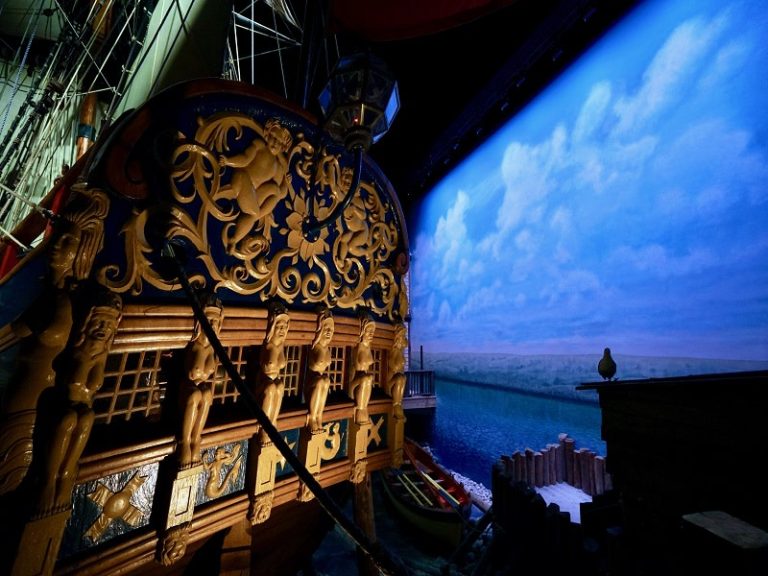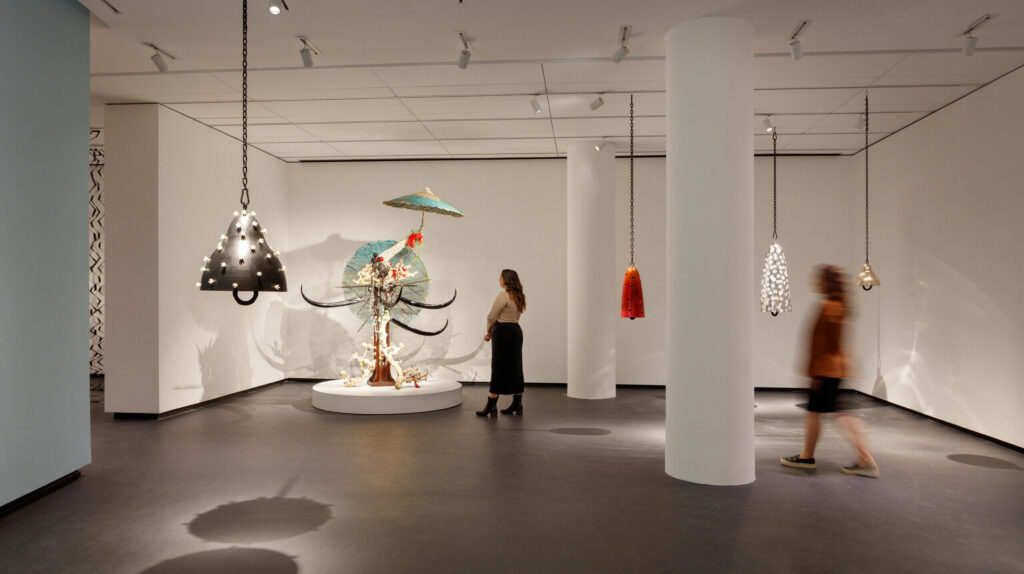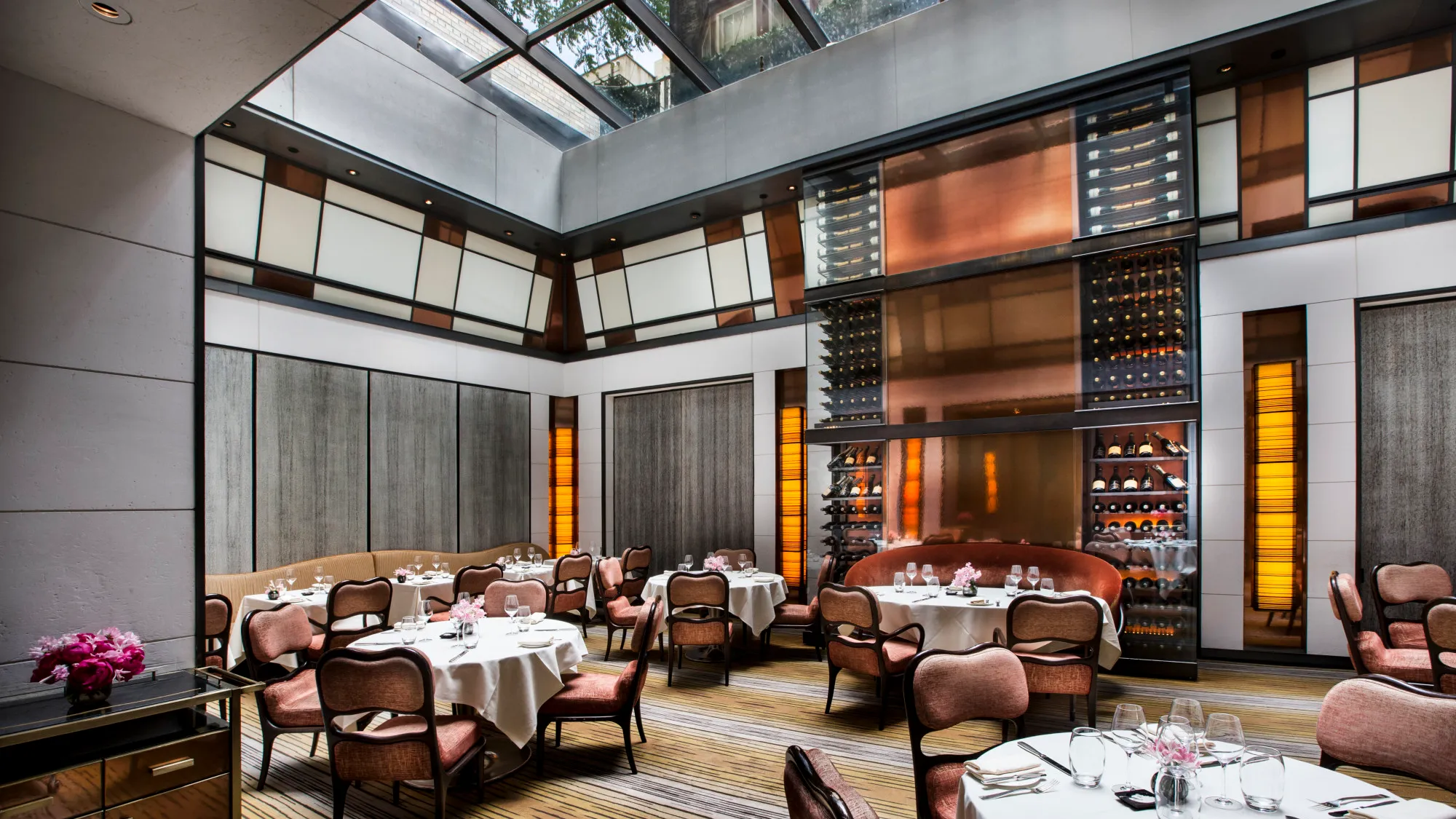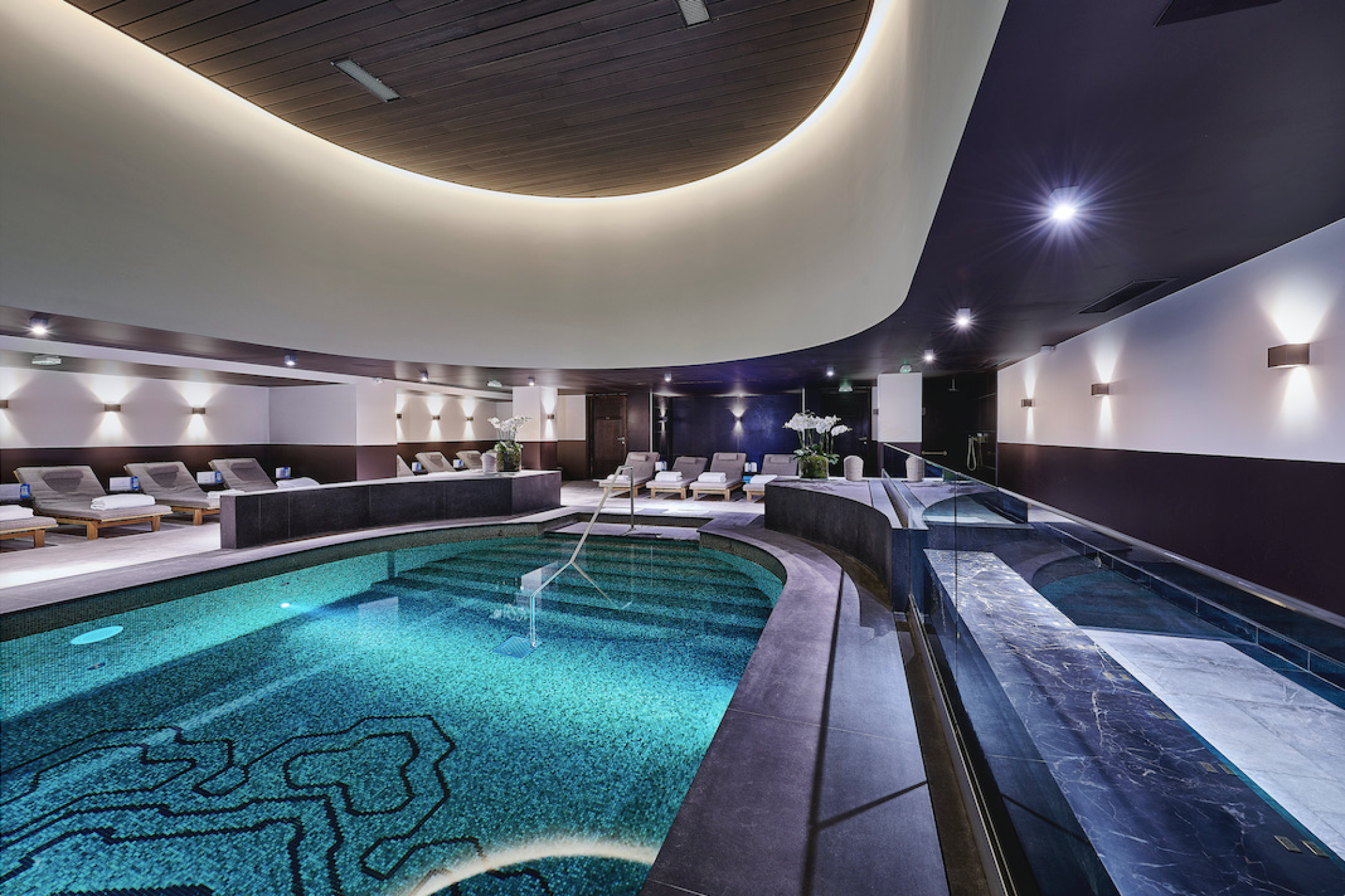Museums have long held a special place in our collective consciousness, serving as time capsules of human history, culture, and innovation. These institutions are not just repositories of artifacts; they are dynamic spaces that continually evolve to captivate and educate audiences of all backgrounds. In an era marked by rapid change and technological advancement, museums have adapted, embracing innovation to remain relevant in the modern world.
The traditional notion of museums as static, dusty repositories of the past is a relic of the past itself. Today, museums are vibrant hubs of creativity, where the past meets the future and where visitors can embark on journeys of discovery. From art galleries and historical exhibits to science and technology showcases, museums offer an array of experiences that span the spectrum of human knowledge and curiosity.
This article delves into the art of curating museum exhibits, exploring the role of curators and the creative process behind selecting themes and concepts. We’ll also venture into the realm of innovative technologies, transforming museum visits from virtual reality and augmented reality experiences to interactive displays that engage visitors like never before.
But it doesn’t stop there. We’ll take you on a tour of the latest museum exhibits, showcasing the most captivating and thought-provoking displays worldwide. Whether you’re an art lover, a history buff, or a science enthusiast, there’s something in the museum world that will ignite your passion for learning.
Museums are not just about what they display but also about how they engage and educate their audiences.
Looking ahead, we’ll discuss the future of museum exhibits, where sustainability, digitalization, and accessibility play key roles in shaping tomorrow’s museums. Museums are increasingly becoming advocates for environmental stewardship and embracing technology to make their collections accessible.
Specialized museums, traveling exhibitions, and the impact of digitalization on museums in the 21st century will be unveiled. Moreover, we’ll shed light on how museums connect with communities through outreach programs and partnerships, enriching the lives of those they touch.
The Art of Curating Museum Exhibits
Curatorial Expertise

Behind every exceptional museum exhibit lies the guiding hand of a curator—a skilled storyteller, historian, and artistic visionary. Curators are the unsung heroes of the museum world, meticulously crafting narratives that breathe life into collections of artifacts. They possess a deep understanding of art, history, or science; their expertise is crucial in selecting pieces that will resonate with visitors.
Curators choose the artifacts and determine the exhibit’s overarching theme, ensuring that it speaks to the heart of the subject matter. Their expertise in research and curation ensures that the exhibit provides context and insight, making it a valuable learning experience for all who visit.
Curating is not merely an academic pursuit; it’s an art in itself. Curators carefully consider the arrangement of artifacts, the flow of the exhibit, and the balance between education and entertainment. They aim to create an emotional connection between visitors and exhibits, sparking curiosity and meaningful conversations.
Themes and Concepts
Choosing themes and concepts for museum exhibits is a delicate balancing act. Curators must find a unifying thread that ties together disparate artifacts and captures the subject matter’s essence. Whether it’s a retrospective of a famous artist’s work or an exploration of a historical period, the theme is the exhibit’s backbone.
Themes can range from the deeply historical, such as “Ancient Civilizations of the Mediterranean,” to the highly contemporary, like “Art in the Age of Digital Innovation.” Regardless of the theme, the curator’s goal is to create a cohesive narrative that resonates with visitors, giving them a deeper understanding of the topic.
The concept behind an exhibit extends beyond the theme to encompass the exhibit’s design, interactive elements, and educational objectives. Concepts can be as diverse as the exhibits themselves. They may include immersive storytelling techniques, interactive displays, or even multimedia installations that transport visitors to different times and places.
The creative process of selecting themes and concepts is dynamic, constantly evolving to engage and captivate audiences. Curators draw from their deep knowledge and their passion for the subject matter to create exhibits that are both intellectually stimulating and emotionally engaging.
Innovative Technologies in Museums
Virtual Reality and Augmented Reality

In recent years, museums have embraced cutting-edge technologies like virtual reality (VR) and augmented reality (AR) to elevate the visitor experience. These immersive technologies can transport visitors to different eras, places, and dimensions, allowing them to engage with history, art, and science in unprecedented ways.
VR headsets can take visitors on virtual journeys through ancient civilizations, where they can explore lost cities or stand amid the grandeur of historical landmarks. AR, on the other hand, overlays digital information in the real world, adding layers of interactivity to exhibits. For instance, visitors can use AR apps on their smartphones to superimpose digital animations or information onto physical artifacts.
Integrating VR and AR has also expanded the possibilities for storytelling within museum exhibits. Curators can now create immersive narratives that invite visitors to become active participants in the exploration of art, history, and science. These technologies make learning engaging and accessible, particularly for younger generations accustomed to digital interfaces.
Interactive exhibits and immersive experiences that utilize VR and AR have become increasingly popular, drawing both tech enthusiasts and traditional museum-goers alike. Museums are harnessing the power of these technologies to bridge the gap between the past and the present, providing visitors with a deeper understanding of the subject matter.
Interactive Displays
Museums are no longer places of passive observation but hubs of interaction and engagement. Interactive displays, often featuring touch-screen technology and sensors, have become integral to the modern museum experience. These displays enable visitors to actively explore topics, manipulate digital representations, and delve deeper into the content.
For example, in a science museum, visitors can use touch screens to conduct virtual experiments or explore the intricacies of the human body. In an art museum, touch screens allow art enthusiasts to zoom in on the details of a painting, uncover hidden layers, and gain insights into the artist’s technique. Interactive displays encourage hands-on learning and empower visitors to tailor their museum experience to their interests.
Beyond touch screens, museums are experimenting with other interactive elements. Motion-activated exhibits, gesture-based controls, and even gamified experiences transform people’s engagement with exhibits. These innovations make learning fun and cater to diverse learning styles and abilities.
Highlighting Recent Museum Exhibits
Art Galleries and Contemporary Art

Museum-goers seeking a dose of aesthetic inspiration need look at the vibrant world of art galleries within museums. These spaces are ever-evolving canvases, showcasing the latest and most thought-provoking works of art, both traditional and contemporary.
In contemporary art, museums have become platforms for artists to push boundaries and challenge conventional norms. Exhibits often feature installations that transcend traditional mediums, incorporating elements of technology, performance, and social commentary. From immersive light installations to thought-provoking sculptures, contemporary art exhibits aim to ignite dialogue and reflection.
For enthusiasts of classical art, museums continue to curate exhibitions that pay homage to the masters. These exhibits often shed new light on the works of renowned artists, offering fresh perspectives and deeper insights. Whether it’s a retrospective of a celebrated painter or a thematic exploration of a particular art movement, these exhibits breathe new life into timeless creations.
Historical Exhibits
Museums are not just about capturing the present and future; they are also steadfast custodians of our past. Historical exhibits transport visitors through time, allowing them to explore different eras, cultures, and civilizations. These exhibits are carefully curated to provide immersive experiences that bring history to life.
From exhibitions exploring ancient civilizations like Egypt or Greece to retrospectives on pivotal moments in modern history, historical exhibits serve as portals to the past. They often feature a combination of artifacts, documents, and multimedia elements to provide a comprehensive period view.
Historical exhibits inform and inspire a sense of wonder and reverence for the achievements and challenges of those who came before us. They allow visitors to follow historical figures’ footsteps, providing a glimpse into the human experience across time and place.
Science and Technology Exhibits
In an age of rapid scientific advancement, museums are at the forefront of showcasing the latest breakthroughs and innovations. Science and technology exhibits cater to the curious minds of all ages, making complex concepts accessible through hands-on learning and interactive displays.
These exhibits often feature cutting-edge research, experiments, and demonstrations that highlight the frontiers of human knowledge. Whether it’s an exhibit on space exploration, robotics, or sustainable energy solutions, science and technology exhibits aim to inspire the next generation of innovators.
One of the exciting developments in science and technology exhibits is the emphasis on sustainability and environmental awareness. Museums increasingly showcase solutions to global challenges such as climate change and resource conservation, empowering visitors to become stewards of the planet.
Visitor Experience and Feedback
Engaging and Educational

Every museum exhibit’s heart lies in engaging and educating visitors. Museums are not just repositories of knowledge but dynamic spaces designed to spark curiosity and foster a deeper understanding of the world. To achieve this, curators and exhibit designers focus on creating engaging and educational experiences.
Engagement often begins with the physical layout and design of an exhibit. Museums carefully consider factors like lighting, spatial arrangement, and interactive elements to ensure that visitors are drawn into the world of the exhibit. Whether it’s the dimly lit ambiance of an ancient history exhibit or a science gallery’s bright and colorful world, the atmosphere plays a pivotal role in setting the mood for learning.
Education within museums takes many forms. It may involve informative placards, audio guides, or docent-led tours that provide context and insights into the exhibits. Museums also harness the power of storytelling to convey complex ideas in a relatable and memorable way. By weaving narratives and personal stories into exhibits, museums make the subject matter more accessible and relatable to a diverse audience.
The most successful exhibits strike a delicate balance between engagement and education. They capture the imagination of visitors while providing them with a deeper appreciation of the subject matter. The fusion of entertainment and enlightenment keeps people returning to museums, eager to embark on new journeys of discovery.
Visitor Feedback and Interaction
Museums recognize the importance of visitor feedback as a vital tool for improvement. They actively encourage visitors to share their thoughts, questions, and insights during and after their museum experience. By collecting and analyzing feedback, museums gain valuable insights into enhancing exhibits and better serving their audiences.
Interactive elements within exhibits often play a significant role in gathering feedback. Museums may provide opportunities for visitors to leave comments, answer questions, or participate in surveys through digital interfaces. This real-time input allows curators and museum staff to gauge visitor reactions and adjust exhibits accordingly.
In addition to digital feedback mechanisms, museums also host events and discussions where visitors can engage in dialogue with curators and experts. These interactions provide a platform for deeper exploration of the exhibit’s themes and encourage a sense of community among museum-goers.
Visitor feedback is not just about addressing issues or areas for improvement; it’s also a source of inspiration for future exhibits. Museums often draw upon the questions and interests of their visitors to develop new content and experiences that resonate with the public. In this way, museums become dynamic and responsive institutions, shaped partly by the voices of those who visit.
The Future of Museum Exhibits
Sustainability and Conservation
In an era where environmental concerns are paramount, museums are stepping up to champion sustainability and conservation. Museums recognize their responsibility to protect the planet and actively work to reduce their carbon footprint and environmental impact.
One of the significant sustainability efforts in museums involves energy-efficient design and operation. Museums are adopting green building practices, incorporating renewable energy sources, and implementing LED lighting to reduce energy consumption. Additionally, efforts are made to minimize water usage, decrease waste production, and promote recycling.
Conservation is another critical aspect of museums’ commitment to sustainability. Museums are not just places for showcasing artifacts; they are also guardians of these invaluable cultural and historical treasures. Conservation efforts include meticulous restoration and preservation techniques to ensure that artifacts endure for generations. Climate-controlled environments and state-of-the-art storage facilities are employed to protect delicate pieces.
Museums also advocate for environmental awareness through exhibits that shed light on climate change, biodiversity, and ecological conservation. These exhibits educate visitors about the urgent need to protect the natural world, fostering a sense of responsibility for future generations.
Digitalization and Accessibility

As technology advances, museums embrace digitalization to expand their reach and enhance accessibility. Digitalization efforts encompass various aspects, from digitizing collections to creating online exhibits and virtual tours.
Digitizing collections allows museums to make their artifacts accessible to a global audience. High-resolution images, 3D scans, and detailed descriptions of artifacts are available online, enabling researchers, students, and enthusiasts to explore museum holdings from their homes. This democratization of access to cultural and historical treasures marks a significant shift in the museum landscape.
Virtual tours have become increasingly popular, especially when physical visits are limited. These immersive online experiences allow visitors to navigate museum spaces, view exhibits, and access multimedia content from their computers or mobile devices. Virtual tours not only provide accessibility but also offer an opportunity to explore museums worldwide without the constraints of geography.
Accessibility is a cornerstone of museums’ digitalization efforts. Museums are investing in inclusive design, making their digital interfaces and exhibits accessible to individuals with disabilities. This commitment to accessibility ensures that everyone, regardless of physical or sensory challenges, can engage with the rich content museums offer.
Museums as Cultural Gateways
Museums and Cultural Preservation
Museums have earned their reputation as guardians of cultural heritage. They play a pivotal role in preserving the traditions, artifacts, and stories that define our diverse societies. Cultural preservation goes beyond the physical conservation of objects; it encompasses the protection and promotion of intangible heritage, including languages, rituals, and indigenous knowledge.
Museums are often the custodians of artifacts that hold deep cultural significance. These treasures serve as touchstones to our shared past, connecting us with ancestors and traditions that might otherwise fade into obscurity. By safeguarding and showcasing these artifacts, museums breathe life into cultures and traditions, allowing them to thrive in the modern world.
Beyond the physical artifacts, museums also support documenting and preserving intangible cultural heritage. Through partnerships with indigenous communities, language experts, and cultural practitioners, museums ensure that traditional knowledge, stories, and practices are preserved to time. These efforts contribute to the cultural resilience of communities worldwide.
Museums as Educational Institutions
While museums are renowned for their collections, they are also powerful educational institutions. They serve as complementary learning spaces that extend beyond formal education systems. Museums offer immersive, hands-on experiences that cater to diverse learning styles, making knowledge accessible and engaging for all.
Schools often visit museums as part of their curriculum, and museums actively design exhibits and programs that align with educational standards. However, museums are not limited to serving students; they welcome visitors of all ages, from preschoolers to senior citizens. Lifelong learning is a core tenet of museums, and their exhibits and events cater to learners’ curiosity at every stage of life.
Museums also embrace informal education, creating environments where visitors can explore topics independently or with the guidance of expert docents. They foster critical thinking, creativity, and a deeper understanding of history, art, science, and culture. Whether it’s a child discovering the wonders of dinosaurs or an adult delving into the complexities of a historical period, museums provide a space for intellectual growth and exploration.
The Global Impact of Museums
Tourism and Economic Benefits

Museums profoundly impact tourism, drawing visitors from near and far to explore their collections and exhibitions. These cultural institutions are not only repositories of knowledge but also major attractions that contribute significantly to local and national economies.
Tourists often seek out museums as key destinations during their travels. The allure of iconic museums, such as the Louvre in Paris, the British Museum in London, or the Metropolitan Museum of Art in New York City, can drive tourism to cities and regions. Visitors come for the art, history, and cultural experiences, and their spending on accommodations, dining, and local attractions bolsters the local economy.
Beyond tourism, museums generate revenue through admissions, memberships, and merchandise sales. Many museums operate as autonomous entities, reinvesting income into their programs, collections, and exhibits. Museums are not just cultural assets but economic engines that create jobs and support businesses in their communities.
Cultural Exchange and Diplomacy
Museums serve as powerful instruments of cultural diplomacy, fostering goodwill and understanding between nations. Cultural exchange programs and international collaborations enable museums to share their collections and expertise with the world, promoting peaceful dialogue and cross-cultural understanding.
Exchange exhibitions, where museums loan artifacts to one another, are common forms of cultural diplomacy. These exhibits facilitate dialogue and collaboration between countries, showcasing the richness of each nation’s heritage. They promote appreciation for diverse cultures and foster mutual respect.
Cultural diplomacy also extends to educational and outreach initiatives. Museums often host cultural events, lectures, and workshops encouraging cross-cultural dialogue and cooperation. These activities promote global citizenship and help break down barriers that divide societies.
Museums become ambassadors of culture, promoting the idea that understanding and appreciating the heritage of other nations can lead to greater global harmony. They create opportunities for people to connect with the world’s cultural diversity and develop a shared sense of humanity.
Conclusion
Museums are more than just repositories of artifacts; they are dynamic, transformative institutions that touch every facet of our lives. They serve as gateways to our past, present, and future, offering immersive experiences that captivate, educate, and inspire. Museums have evolved from static institutions into vibrant, interactive spaces where history, art, science, and culture come alive.
The art of curating, guided by curatorial expertise and creative themes, forms the backbone of museum exhibits. These exhibitions showcase the latest and most thought-provoking works of art, historical discoveries, and scientific innovations. Museums strive to strike a delicate balance between engagement and education to spark curiosity and foster a deeper understanding of the world.
Innovative technologies, including virtual reality and interactive displays, transform the museum landscape, making learning engaging and accessible. Museums are embracing digitalization and accessibility to expand their reach and provide inclusive experiences for all visitors, regardless of physical or sensory challenges.
Museums are not just insular institutions; they reach out to their communities through inclusive programs, events, and partnerships. They celebrate diversity, promote cultural exchange, and offer platforms for dialogue and understanding. Museums profoundly impact tourism, driving economic growth and supporting local businesses.
On the global stage, museums serve as ambassadors of culture, promoting cultural exchange and diplomacy. They foster goodwill, promote cross-cultural understanding, and facilitate dialogue between nations. Museums transcend borders, creating opportunities for people to connect with the world’s cultural diversity and develop a shared sense of humanity.
In a rapidly changing world, museums remain steadfast in their mission to preserve, educate, and inspire. They continue adapting, innovating, and reaching new horizons, proving that their influence extends beyond their walls. Museums are not just cultural treasures but beacons of enlightenment, unity, and appreciation for the richness of human culture and heritage.








